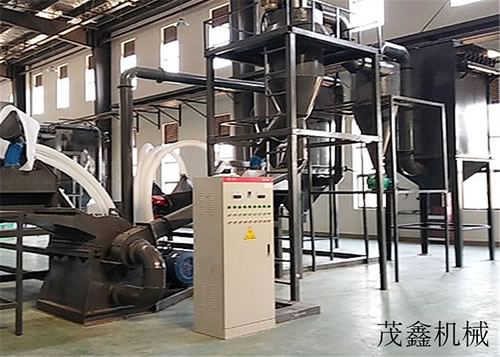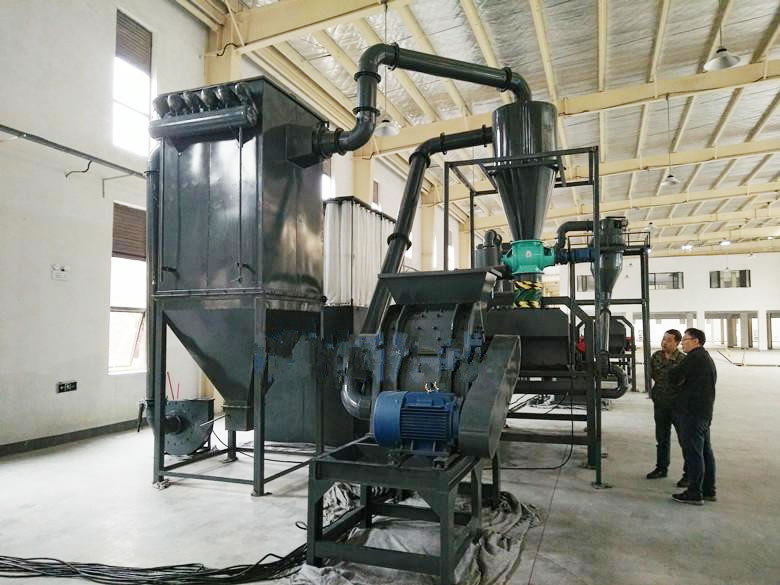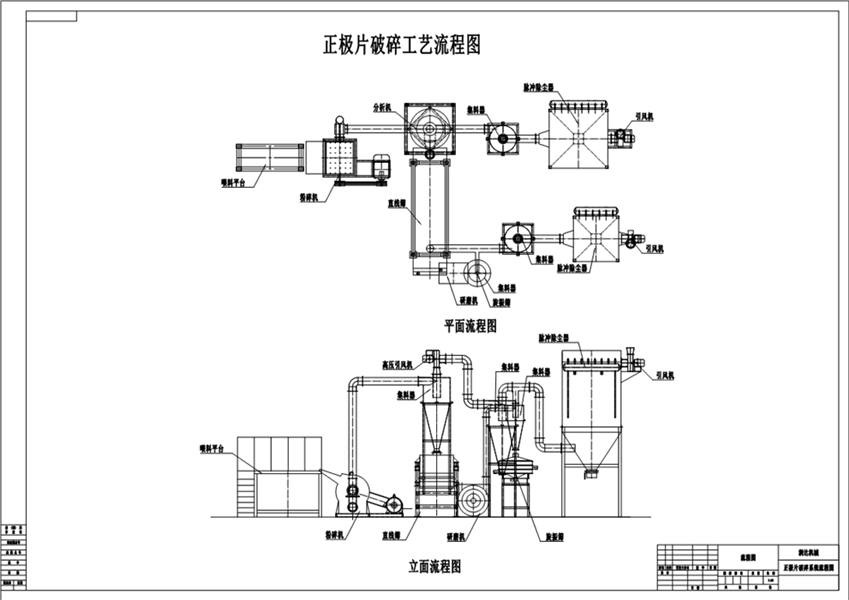Positive electrode plate crushing and recycling equipment

Dear Stockholm [Positive electrode plate crushing and recycling equipment] customer, it is very lucky that you can find us in the vast information! The hundred-year journey follows the original intention, and sets sail for a new journey Maoxin Machinery is a Chinese Positive electrode plate crushing and recycling equipment product supplier. Since its establishment, Promote energy conservation and emission reduction together, a new green ecological home has been deeply involved in the Lithium battery and circuit board recycling field and has provide high quality and low price Positive electrode plate crushing and recycling equipment products for Lithium battery and circuit board recycling customers! The following is the relevant information of Positive electrode plate crushing and recycling equipment product organized by Maoxin Machinery for you. Maoxin are willing to provide you with new Positive electrode plate crushing and recycling equipment information to help you make a correct choice!
Brief introduction
Lithium ion batteries (hereinafter referred to as lithium-ion batteries), due to their significant advantages such as high voltage, large specific capacity, long lifespan, and no memory effect, have quickly occupied the power source market of portable electronic and electrical equipment since their commercialization, and their production has been increasing year by year. Lithium batteries are electronic consumables with a lifespan of approximately 3 years. If discarded lithium batteries are not properly disposed of, their containing lithium hexafluorophosphate, organic compounds such as carbonates, and heavy metals such as cobalt and copper will inevitably pose a potential pollution threat to the environment. On the other hand, cobalt, lithium, copper, and plastics in waste lithium batteries are valuable resources with high recycling value. Therefore, scientific and effective treatment and disposal of waste lithium batteries not only have significant environmental benefits, but also have good economic benefits.
Lithium batteries mainly consist of a casing, positive electrode, negative electrode, electrolyte, and separator. The positive electrode is composed of lithium cobalt oxide powder coated on both sides of the aluminum foil collector through PVDF that acts as a bonding agent; The negative electrode structure is similar to the positive electrode, consisting of carbon powder bonded to both sides of the copper foil current collector. Based on the structural characteristics of lithium battery positive electrodes, our company adopts a combined process of crushing, screening, and airflow sorting to conduct separation and enrichment research on them, in order to achieve the separation and recovery of aluminum and black powder from waste lithium battery positive electrodes.

Operational principle
Based on the positive electrode structure of lithium batteries and the material characteristics of aluminum and positive electrode materials, a combined process of hammer vibration crushing, vibration screening, and airflow sorting is adopted to separate and recover the waste lithium battery positive electrode composition materials. The experiment used ICP-AES to analyze the metal grades of the experimental samples and the separated and enriched products. The results show that after crushing and screening, the grade of aluminum in the crushed material with a particle size greater than 0.25mm is 92.4%, while the grade of positive electrode material in the crushed material with a particle size less than 0.125mm is 96.6%, which can be directly recovered; In crushed materials with a particle size of 0.125-0.25mm, the grade of aluminum is relatively low, and effective separation and recovery of aluminum and positive electrode materials can be achieved through airflow separation; During the airflow sorting process, when the operating airflow speed is 1.00 m/s, the aluminum recovery rate reaches 92.3% and the grade reaches 84.4%.
Process flow
Scrapped positive electrode plates are crushed in a dedicated crusher, and after crushing, the material enters the analyzer for initial sorting. The mixture of metal and electrode powder is screened through a linear screen, with metal aluminum coming out of the upper layer, positive electrode powder coming out of the lower layer, and a mixture of metal aluminum and positive electrode powder coming out of the middle layer. The mixture enters the grinder for grinding, and after grinding, the material enters the collector and is discharged into the rotary vibrating screen for screening.

Characteristic
1. The combination process of hammer vibration crushing, vibration screening, and airflow sorting can achieve the resource utilization of metal aluminum and cathode materials in waste lithium battery cathode materials.
2. The positive electrode material can be effectively peeled off between carbon powder and aluminum foil through hammer vibration crushing, and then preliminarily separated from the positive electrode material through vibration screening based on particle size and shape differences. The results of hammer vibration peeling and screening separation show that aluminum and positive electrode materials are enriched in particle size ranges greater than 0.25mm and less than 0.125mm, with grades as high as 92.4% and 96.6%, respectively, and can be directly sent to downstream enterprises for recycling.
3. For crushed particles with a particle size of 0.125-0.25mm and low aluminum grade, airflow separation can be used to achieve effective separation between aluminum and positive electrode materials. When the airflow speed is 1.00m/s, good recovery results can be achieved, and the recovery rate of metallic aluminum can reach 92.3%, with a grade of 84.4%.
4. This equipment is mainly used by lithium-ion battery supply companies to separate and process the positive electrode materials from scrapped positive electrode plates for the purpose of recycling. The complete set of equipment operates in a negative pressure state, with no dust leakage and a separation efficiency of over 98%.
Main component configuration
|
Component Name |
Main component materials |
Model |
Ower(kw) |
Number |
|
Feeding platform |
Q235 |
1500 |
1 |
|
|
Shredder |
Q235 |
1000 |
55 |
1 |
|
Analyzer |
Q235 |
1200 |
2.2 |
1 |
|
Linear sieve |
Q235 |
3000 |
2*0.75 |
1 |
|
Grinder |
Q235 |
1000 |
37 |
1 |
|
Loading head |
Q235 |
400 |
0.75 |
1 |
|
Rotary vibrating screen |
Q235 |
800 |
1.1 |
1 |
|
High pressure induced draft fan |
Q235 |
F15 |
1.5 |
1 |
|
Loading head |
Q235 |
800 |
0.75 |
2 |
|
Pulse dust collector |
Q235 |
MC-64 |
1 |
|
|
Pulse dust collector |
Q235 |
MC-48 |
1 |
|
|
Induced draft fan |
Q235 |
F75 |
7.5 |
1 |
|
Induced draft fan |
Q235 |
F11 |
11 |
1 |
|
Control cabinet |
800 |
1 |
||
|
Control cabinet |
800 |
1 |